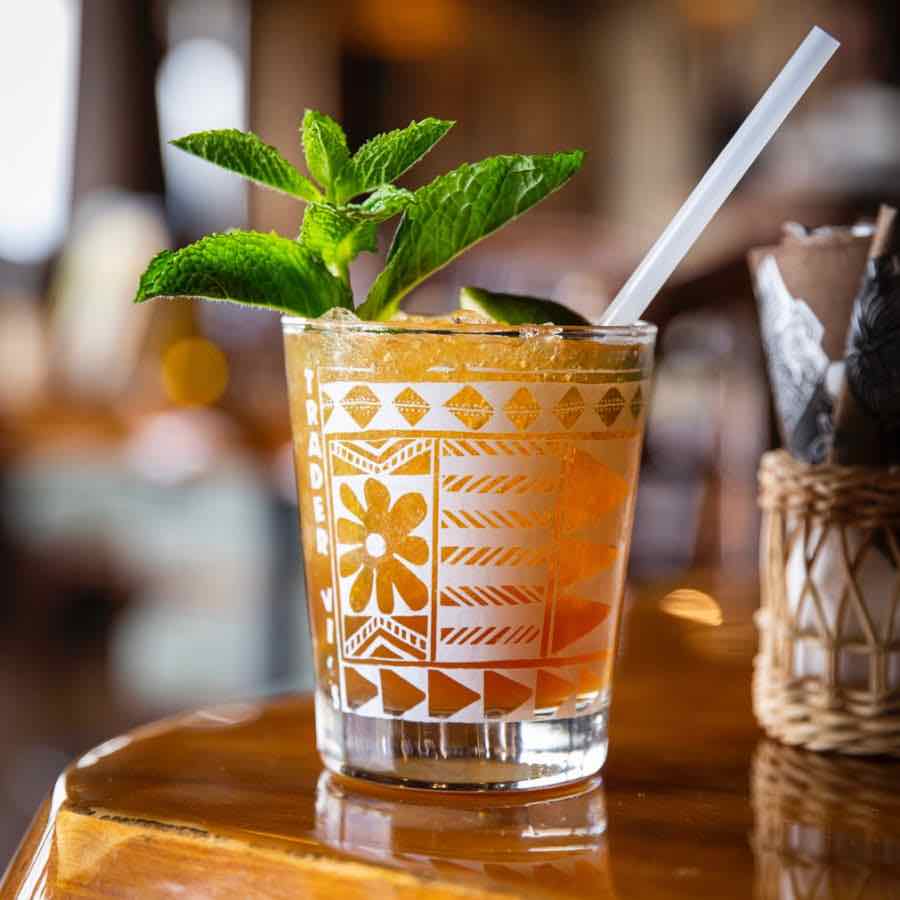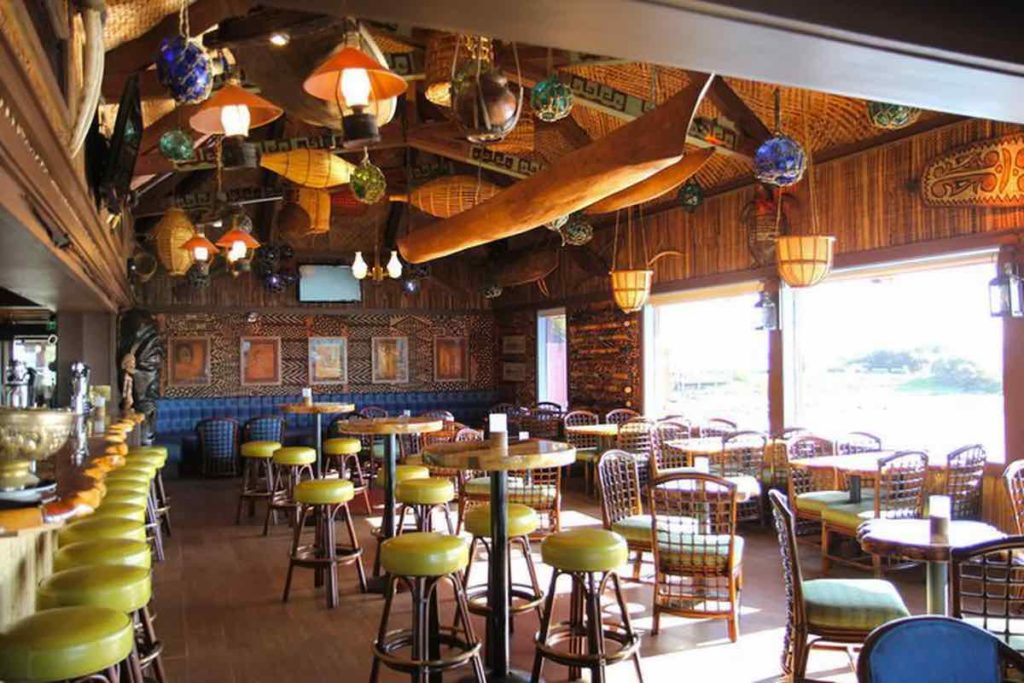The Mai Tai was created by Trader Vic in 1944 and its original recipe is very well-known, even if many average-quality bars do not adhere to it. We even know the origin of its name: according to Vic, he created the drink to highlight a long-aged Jamaican rum and served it to two friends visiting from Tahiti. Upon trying it, one described it as “mai tai,” a Tahitian slang for “awesome.”
The origin and recipe for the Mai Tai are crystal clear… as long as you believe the Trader Vic version. Vic wasn’t the originator of the Tiki bar and cocktail craze; that was Donn Beach of Don the Beachcomber’s. Vic visited Don the Beachcomber’s in Hollywood, saw its potential, and returned home to Oakland to redecorate his bar Hinky Dinks and rename it Trader Vic’s. Not only did Vic “borrow” the tropical bar concept from Donn, Donn later accused Vic of ripping off the Mai Tai from a drink of his called the Q.B. Cooler.
Tiki bar operators in this era kept their cocktail recipes secret even from most of their own staff so that bartenders could not leave to recreate them at competing bars. So Vic would have had to taste the Q.B. Cooler and recreate its recipe from memory.

The Q.B. Cooler contained three kinds of rum, orange and lime juices, honey, falernum, ginger syrup, bitters, and soda water. The Mai Tai contained one kind of rum, orange liqueur, lime, orgeat, and sugar syrup. Both were garnished with mint and both contained rum and lime, but otherwise they didn’t have any other overlapping ingredients, and they sure don’t sound like they’d taste the same. And while we’ll never know for sure if the Q.B. Cooler inspired the more famous cocktail, in Beachbum Berry Remixed, author Jeff Berry wrote, “It does indeed taste like the Trader’s Mai Tai.”
Despite (probably) inventing the Mai Tai in 1944, Trader Vic didn’t reveal his actual recipe until 1970, as part of a lawsuit against Don the Beachcomber’s bottled Mai Tai mix. The mix claimed it originated at Don the Beachcomber’s, and at this point Vic was fed up with imitation copies of his drink. Vic later told his story on the record, that the drink was first created with 17-year-old J. Wray & Nephew rum from Jamaica. He ran through the world’s supply of this rum in a few years and replaced it with a 15 year rum from the same producer, and then in the 1950s with a blend of dark Jamaican rum and rum from Martinique.
And that brings us to the next mystery. Martinique is famous for its rhum agricole; that is, rum distilled from fermented fresh sugar cane juice rather than molasses. This rum has a distinct grassy flavor and is used in the island’s famous Ti’ Punch. Many Tiki bartenders seeking to follow authentic historical recipes reached for rhum agricole and a Jamaican rum to mix together. I’ve had plenty of Mai Tais made this way; they’ve all tasted great.

But alas, they were probably not as authentic as the bartenders intended. Smuggler’s Cove author Martin Cate has suggested that during the 1930s and ’40s, the rum from Martinique might more likely have been molasses-based rum. And in a detailed blog post, Cocktail Wonk writer and Minimalist Tiki author Matt Pietrek shared some of his research on the subject, finding that rhum agricole was more of a locals’ rum while molasses based rums were most likely to be exported. Pietrek shared vintage tasting profiles and production information, but concluded that the true flavor profile the Martinique rum Trader Vic used in the 1950s era Mai Tai remains a mystery.
Luckily for us, the Mai Tai still tastes pretty good as long as you use a full-bodied aged rum, no matter from which country it came. For many of us, the more pressing mystery about the drink, when served a blue-colored Mai Tai in a plastic coconut in a tacky tourist bar, is “What the heck else did you put in it?”



